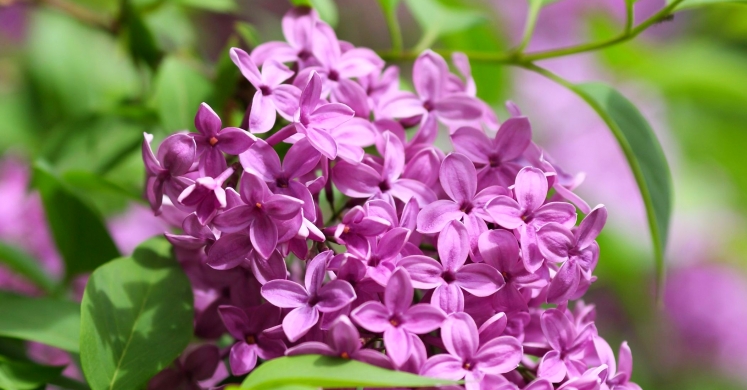Blog

#bioPGH Blog: Common Lilac
 A resource of Biophilia: Pittsburgh, #bioPGH is a weekly blog and social media series that aims to encourage both children and adults to reconnect with nature and enjoy what each of our distinctive seasons has to offer. From the best times to plant seasonal flora and enjoy their peak blooms, to astronomical events and creatures to keep an eye and ear out for, Phipps will keep you in the know with what’s going on in our environment!
A resource of Biophilia: Pittsburgh, #bioPGH is a weekly blog and social media series that aims to encourage both children and adults to reconnect with nature and enjoy what each of our distinctive seasons has to offer. From the best times to plant seasonal flora and enjoy their peak blooms, to astronomical events and creatures to keep an eye and ear out for, Phipps will keep you in the know with what’s going on in our environment!
In the thick of spring, there is no shortage of flowering plant life. As the dogwood trees we highlighted in last week’s blog post begin to transition from their pink and white bracts to their green summer foliage another botanical beauty is just beginning to burst into bloom: common lilac. The sweet-smelling clusters of flowers of the common lilac shrub, Syringa vulgaris, begin to bloom in early to mid-May and last for approximately two to three weeks in the northern states. While lilacs come in seven different color varieties, the most well-recognized blossoms are the purple flowers produced by the common lilac. A native plant species of Eastern Europe and Asia, lilacs are hardy plants that can range in size from five to fifteen feet tall, depending on the species; are easily grown and maintained in areas that receive full sun; and come in a wide variety of cultivars (approximately 200), making lilacs a very popular ornamental plant species. In addition to their natural beauty, the sweet fragrance produced by the brightly colored blossoms also draws in a variety of pollinators, in particular, monarch and swallowtail butterflies. Did you know that lilacs are actually related to olives? Lilacs and olive trees are both members of the Oleaceae family, which also includes forsythia, ash and jasmine!
Connecting to the Outdoors Tip: Similarly to its cousin the olive tree, lilacs are also very versatile plants and have many uses. Lilac’s dense wood has been used to create musical instruments and knife handles; the fragrant oil extracted from the leaves of the flowers is often added to soaps, candles and perfumes; and, the flowers of the plant are frequently incorporated in bouquets, pressed and used as decorative additions to arts and crafts, and even eaten! With such a wide variety of uses, consider creating your own lilac infused oil for incorporation into homemade soaps, lotions, bubble baths and candles. If you’d like to experiment with lilac in the kitchen, consider trying your hand at a recipe for lilac flower water, lilac cordial or lilac jelly. If you would rather just enjoy the blossoms as they are, you can always take cuttings from a lilac shrub or tree for floral arrangements, which if prepared correctly will bring the beauty and fragrance of lilac indoors for up to seven to ten days. But, if live lilacs are few and far between, consider getting crafty and helping little ones create their own lilac blossoms out of cardstock for a bouquet that will last well into the summer and beyond!
Continue the Conversation: Share your nature discoveries with our community by posting to Twitter and Instagram with hashtag #bioPGH, and R.S.V.P. to attend our next Biophilia: Pittsburgh meeting.
Additional Resources:
Lilacs | The Old Farmer’s Almanac
Fun Flower Facts: Lilac | Grower Direct Fresh Cut Flowers
The Best Plants to Attract Butterflies & Birds | Ideal Home Garden
Plants that Attract Butterflies | The Old Farmer’s Almanac
Homemade: Perfumed Lilac Oil | Bloglovin’
Uses of Lilac Plants - eHow
Lilac Flower Water | Fare Isle
Lilac Cordial | Semiswede
Edible Flowers in the Kitchen: Season of Lilac | Makka’s Kitchen
How to Keep Cut Lilacs Fresh | Garden Guides
Paper Flowers | Utah’s Crafty Chick
